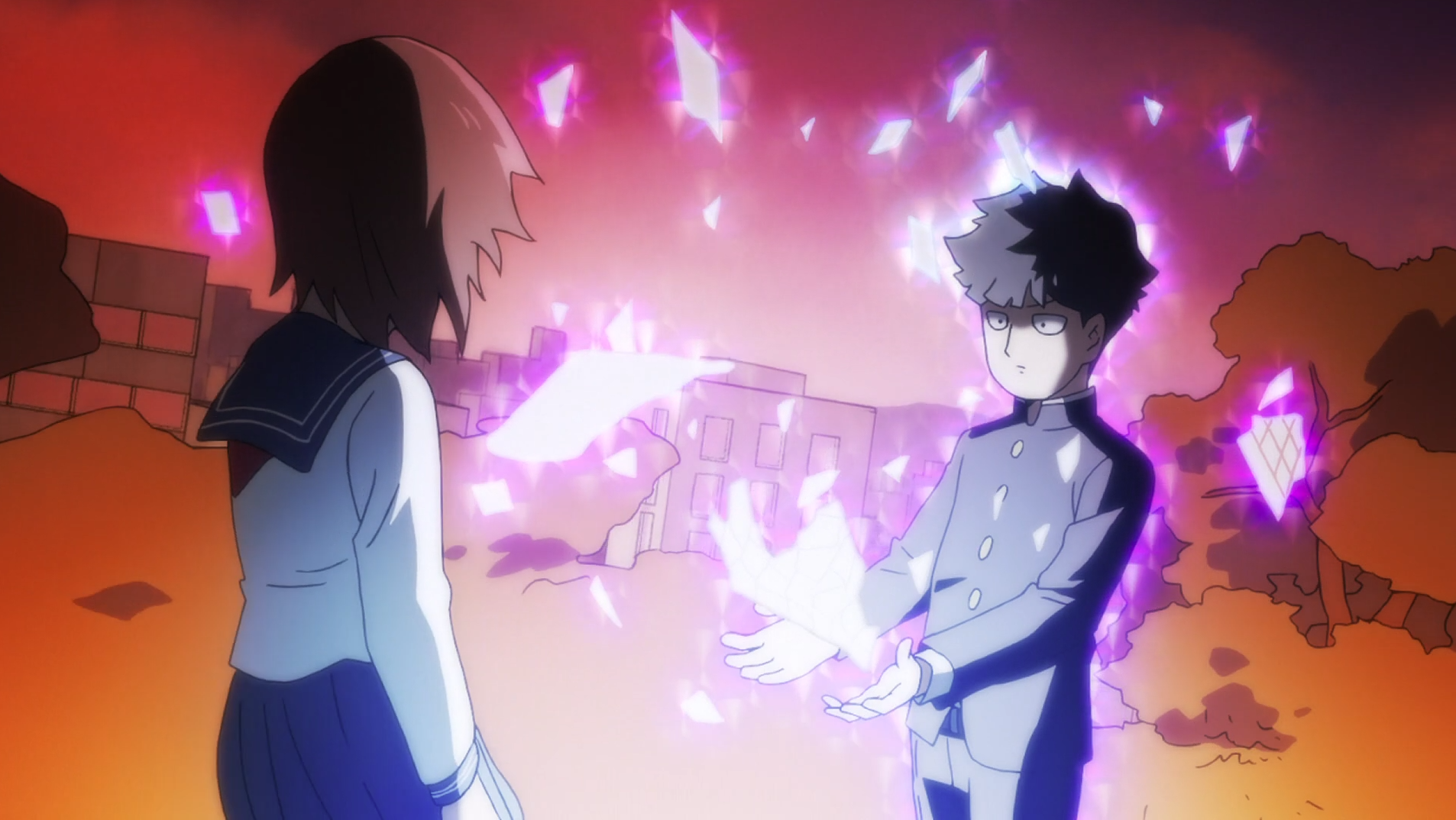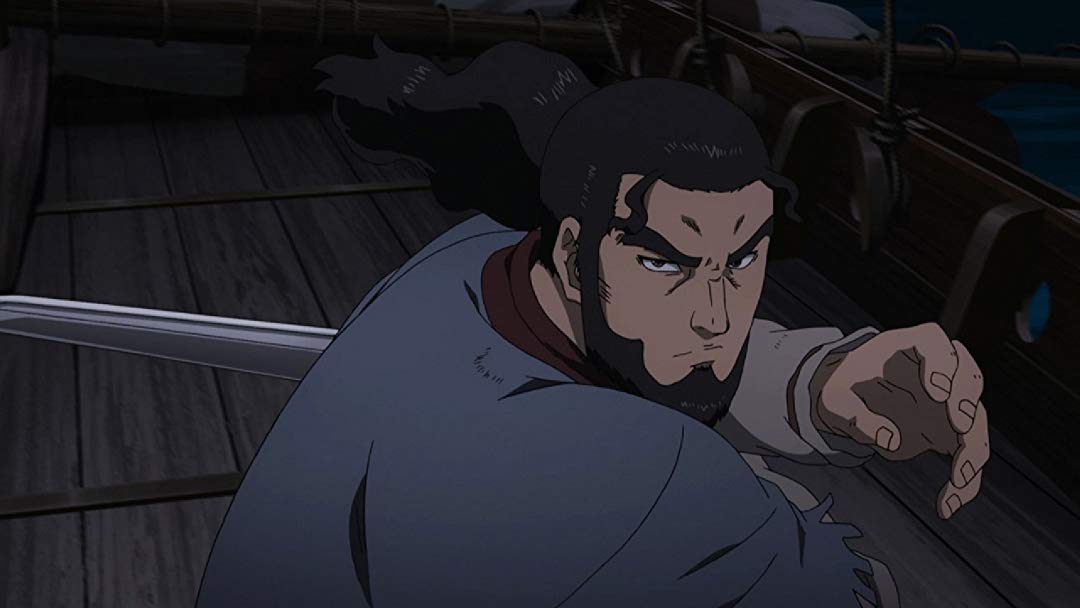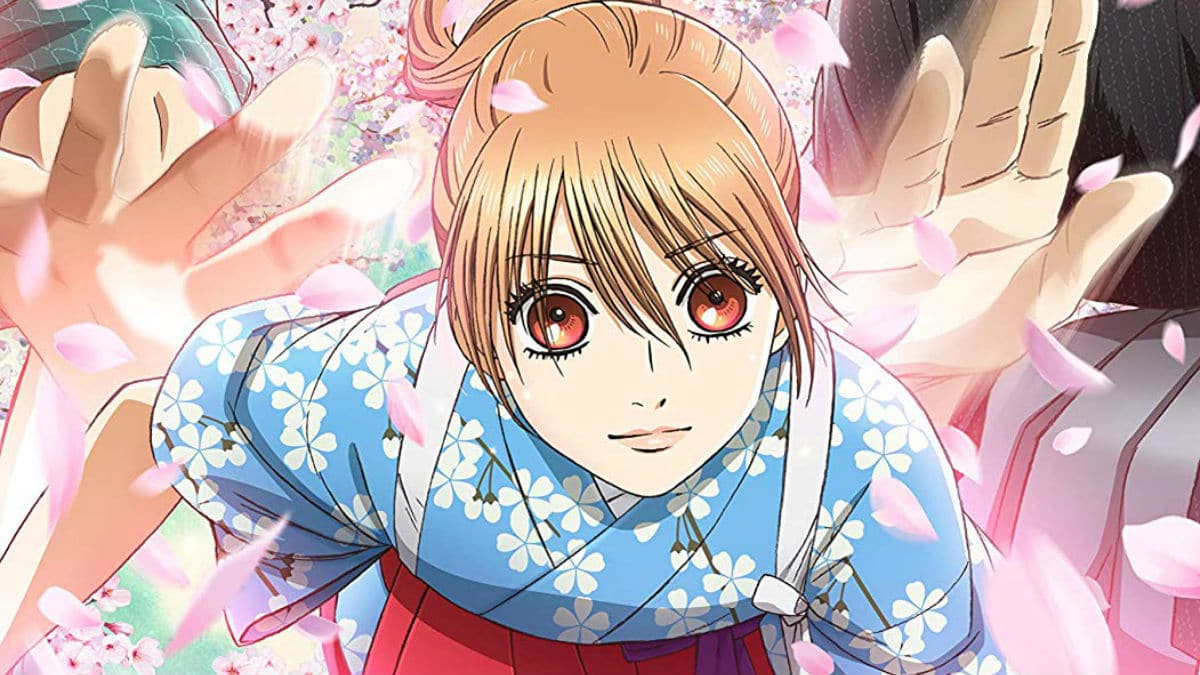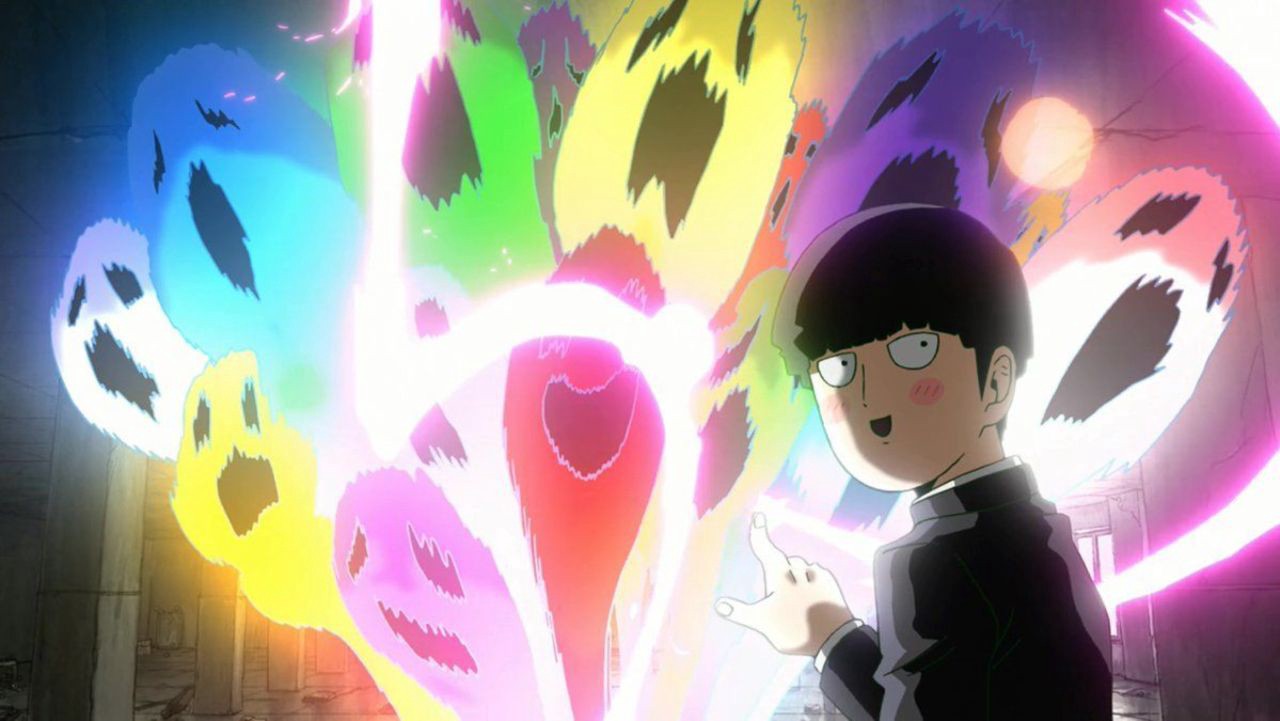
As we hurtle forward into a new decade, it seems as good a time as any to take stock of the previous year’s standouts in televised Japanese animation. As per usual, there was probably way too much anime released, with approximately 169 different shows airing over the course of the year. Thankfully there were more than a few great series in this deluge, with a respectable smattering of different genres represented.
Sports dramas had a great year, with Run With the Wind, and Stars Align both demonstrating a knack for sketching complex characters and conveying the thrill of their respective sports. This year’s Shonen Jump adaptations were an impressively diverse lot, and surprisingly only one of the standouts was an action show. Dr. Stone successfully articulated the miracles of science, The Promised Neverland was a non-stop vehicle for tension, delivering a rousing game of cat and mouse that affirmed the unbreakable nature of human spirit, and Demon Slayer was elevated by a pervading sense of kindness and the consistency of ufotable’s animation chops.
We got also some great work from the medium’s biggest names. Mari Okada’s O Maidens in Your Savage Season was a grounded coming-of-age drama that captured all of the messy particulars of coming to terms with your sexual identity. Although Sarazanmai isn’t my favorite work from Kunihiko Ikuhara due to its repetition, it still is an interesting watch thanks to his trademark densely layered symbolism, surrealism, and alluring weirdness. The legendary Shinichiro Watanabe returned with Carole and Tuesday, a thoroughly transfixing watch thanks to its fantastic music, likable leads, and its overwhelming positivity in the wake of the current dismal political climate. We also got more Jojo’s Bizzare Adventure with Golden Wind, which was another great arc that continued the series’ trend of endlessly creative battles and meme-able moments.
Finally, there were also some thoroughly charming comedies. Kaguya-sama Love is War weaponized its central gag of two high schoolers refusing to acknowledge their shared feelings for each other, and its stream of hilariously convoluted plans were elevated by great production. Hitoribochi proved to be the most aggressively wholesome thing imaginable as it charmingly depicted a socially awkward girl slowly come out of her shell.
But beyond all of these great series that delivered on the medium’s many charms, there were three shows that particularly stood out to me. Let’s get into them.
3. Vinland Saga

Vinland Saga effortlessly changes genre at a whim, flipping between large scale battles, political intrigue, and quiet moments of pastoral life. And while it excels at each of these modes, its greatest appeal is the underlying pathos that pervades each phase of the story. Set during a war between Denmark and England in the 11th century, we witness the extremes of human depravity first hand as Viking marauders cut their way through the countryside with violent zeal. Thorfinn, the son of a great warrior, finds himself pulled into the bloodshed as he attempts to claim revenge against Askeladd, a Viking leader who wronged him.
But despite the grim premise, the takeaway here isn’t overtly nihilistic. No, instead Vinland Saga pushes forward a more challenging thesis. It proposes that despite our inherent ugliness there is still hope that we can be better, a sentiment which is carried by the cast of multifaceted characters. Images of a distant verdant countryside drift through Thorfinn’s mind as he recalls the promise of a foreign land untainted by war. Despite his horrific crimes, the Viking leader Askeladd is able to see the abject cruelty being perpetrated around him and wishes for something more as he finds himself trapped in cycles of violence. A young prince Canute grapples with notions of humanism in a world where the cost of human life is quite cheap. And then there’s Thorfinn’s father Thors, a warrior turned pacifist who works as this story’s emotional and thematic anchor. In one of the series’ defining moments, he looks his son squarely in the face and states “You don’t have any enemies. No one has any enemies”. This viewpoint pervades the narrative to its core, and while virtually no one in the story follows this creed, these words reverberate in the background of every scene, underlying the tragedy of the perpetual suffering we witness.
The consequences of war are conveyed in visceral fashion. The brutal thud of axes and the swift slash of daggers are made real through clean animation cuts that show gory aftermath. In the style of Norse sagas, some of these warriors perform superhuman feats, underlining the importance of warriors in this warrior culture. And although there are quite a few exciting and well-choreographed duels, the aftermath of almost every fight is grisly, tying into the sentiment that all of this death is for nothing. Besides the inconsistent 3D animation, the only other knock against the first season of Vinland Saga is that its middle stretch is paced poorly at times, as circumstances very slowly turn increasingly dire. But even this relatively weak run is punctuated by some very strong storytelling. All things considered, this adaptation of Makoto Yukimura’s beloved manga does an excellent job of conveying the cost of systemic violence, depicting the enslaving forces that drive this destruction, as well as the distant hope of a better future.
2. Chihayafuru Season 3

While Chihayafuru may not quite have the same thematic weight as the other entries on this list, it is more than makes up for it in sheer likability and entertainment value. In its third season, the show continues to demonstrate its ability to transform every single match of Karuta, an obscure Japanese sport that involves cards and poetry, into grandiose duels that demand our emotional and cognitive investment. Although the first half of the new season almost entirely focuses on consecutive tournament arcs, it manages to avoid lapsing into tedium by constantly introducing new strategies, articulating the specific tactical nuances of every encounter in an easy to digest fashion. Since at this point we have been introduced to many of the most prominent faces in the world of Karuta, we can jump back and forth between matches across Japan, as familiar characters give insight into the specific methods and counter methods being employed by various rivals. It’s pretty incredible that this story manages to digestibly convey deep strategy in a sport that none of us will likely ever play, and even more impressive still that it is so exhilarating to watch.
But the melding of physical and cerebral talent isn’t just conveyed through exposition, the beautiful background art and visual themes that complement the competitors showcase the unique energy of their styles, adding an important layer of artistic flourish. Crashes of thunder, the rush of the tide, and other elemental themes combine with abundant freeze frames to create detailed and thoroughly dramatic compositions. While a lot of the visual execution comes down to its great usage of color, artistic framing, and suspenseful sense of showmanship, the intricacies of the game are also conveyed through animation. For instance, the menacing nature of the game’s best players is conveyed through how they move. The Queen (the highest-ranking female player) attacks with such precise grace that her style is dubbed “silent Karuta”. Meanwhile, Suo the Master (the best male player), has unparalleled hearing and reaction times, his game sense represented by his ability to strike instantaneously in a straight line. Because Karuta isn’t an overwhelmingly popular game, especially not outside of Japan, it is essential that the show is able to visually articulate the skill of its top competitors, and here the intimidating power of the reigning Master and Queen sets a clear skill ceiling that our protagonists must try to blast their way through.
This struggle to reach the highest level of play takes on increased importance in the latest season, as our main characters Chihaya, Taichi, and Arata all compete in A-ranked tournaments. But beyond simply focusing on their trials within the context of the sport, we also see their general struggles as messy teenagers. Taichi’s arc, in particular, feels the most wrought with nuance, as he struggles through a self-defeating and sometimes unhealthy relationship with Karuta. His unyielding drive isn’t simply presented as admirable, but instead as toxic. This contrasts nicely against the other two leads whose deep love of the game stems from their shared memories, those first few games they played together creating a lifelong bond. But even this bond takes on extra complexity, as Arata and Chihaya fumble through their own feelings. Additionally, almost every single other character is also given clear and convincing motives for wanting to win. Some have been struggling to reach the top their entire adult lives, others want to prove to their children that having a passion all to your own is essential. This makes every round not only tactically, and visually interesting, but also quite moving. All things considered, Chihayafuru Season 3 continues the series’ knack for delivering on a sports story that is remarkably balanced, as clever as it is dramatic.
1. Mob Psycho 100 Season 2

I can confidently say that out of every show released this previous year, the series that best demonstrates the unique appeal of animation as an art form is Mob Psycho 100. While its first run of episodes stands as one of my personal favorites, the second has become something more, a tent pole for the medium that levies all of its strengths. Almost every single episode unites many of the best action animators in the world with a script that lovingly crafts a tale about the crushing peril of natural talent and the quest for selfhood. It can be funny, tragic, and hopeful, frequently all in the span of a few minutes. The kaleidoscopic visuals morph as consistently as the tone, switching between different art styles at a whim to accentuate these different modes
Director Yuzuru Tachikawa is able to so seamlessly blend these disparate scenes, shifting from moments of humor to breathtaking action, because everything always comes back to our protagonist’s central struggle. Mob is a middle school boy with incredible telekinetic abilities, powers that he both loathes and fears at the beginning of the story. Although he is gifted with incredible abilities, all he wants is to be a normal kid who fits in and has friends. This internal struggle with natural talent plays out to some extent with almost every other major character in the story, particularly the villains. The shadowy cabal known as CLAW is made up of other powerful espers who define their entire identity around their powers, falling into self-destructive belief structures that dictate their supposed superiority over the rest of mankind. But Mob slowly comes to see that his powers don’t define him and that he is a more well-rounded, complete person because he isn’t entirely obsessed with his telekinetic abilities. Although this thirteen episode season is made up of many different plot-arcs, cohesion is maintained because of this central discourse.
Studio Bones sells each emotional turn thanks to the talent of world-class animators like Yutaka Nakamura and Hakuyu Go. During episode one we get our first show-stopping moment when Mob attempts to communicate the importance of self-acceptance, a heartfelt expression that communicates how far our protagonist has come since the beginning of this story. From there we are treated with a bevy of action highlights, some of which completely reframe accepted cliches through clever cinematography. At one point our heroes face an enemy with a commonly retread power, the ability to teleport. However, the frantic editing of these scenes instills true dread, as our foe mockingly obliterates the good guys in a series of terrifying cuts. These are just a few passing examples in what is truly an embarrassment of riches, a nonstop feast of brilliantly animated sequences that helps hammer home the story’s ideas. Mob Psycho 100 is the type of show that reminds people why they fell in love with anime in the first place. It seamlessly blends its convincing thematic subtext with gorgeous slices of animation, its empathetic worldview washing over its weighty discourse on self-worth. In a year that, at least for those who follow the news, was defined by cruelty, it was refreshing to have a show that is so defined by kindness.






